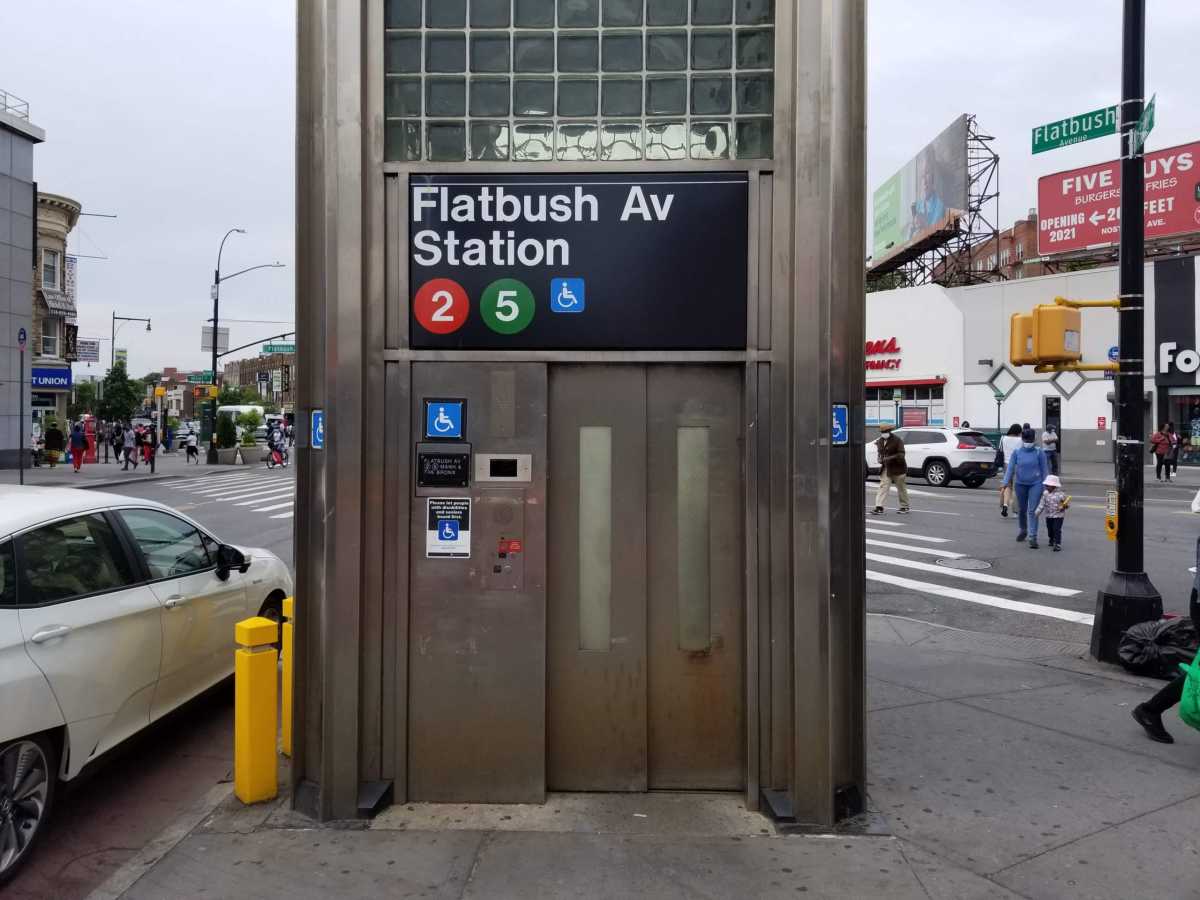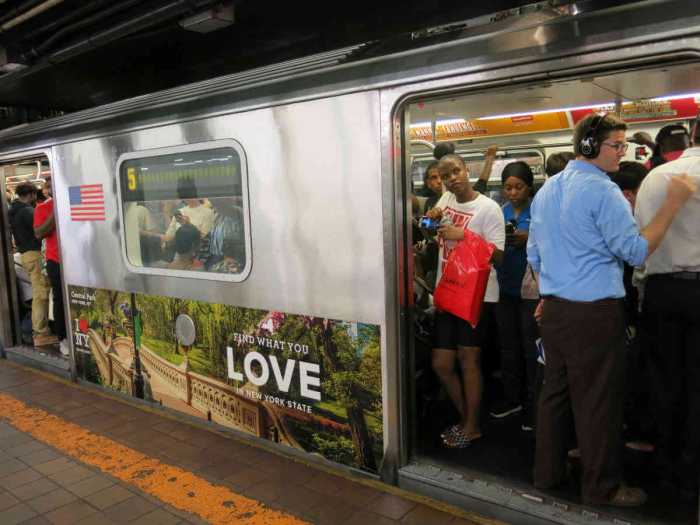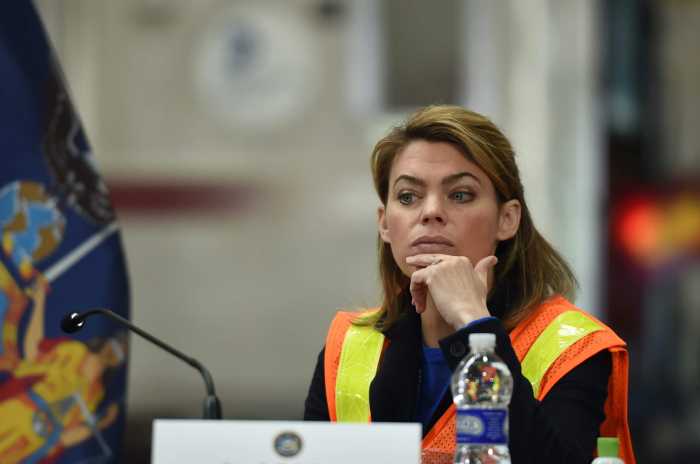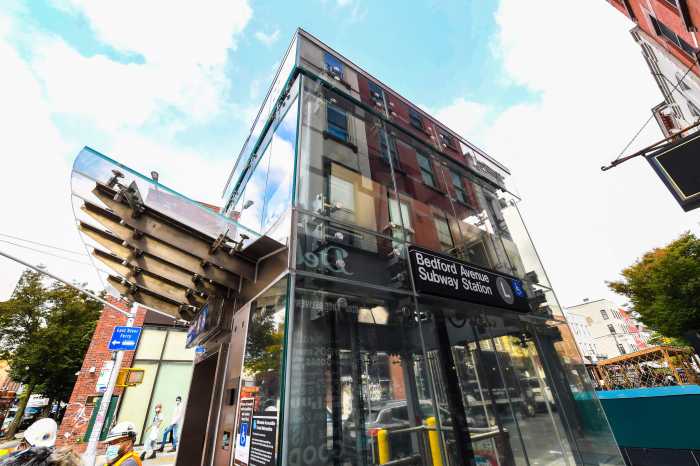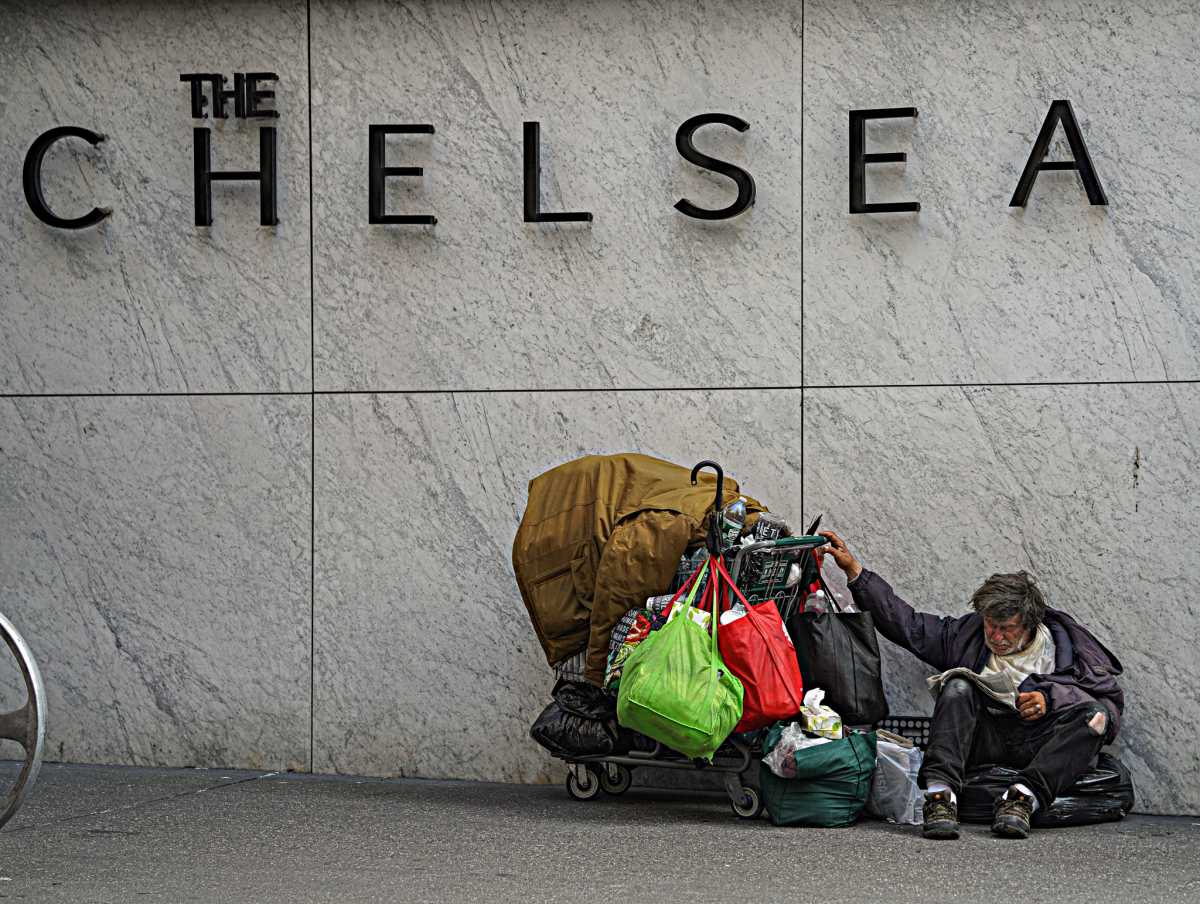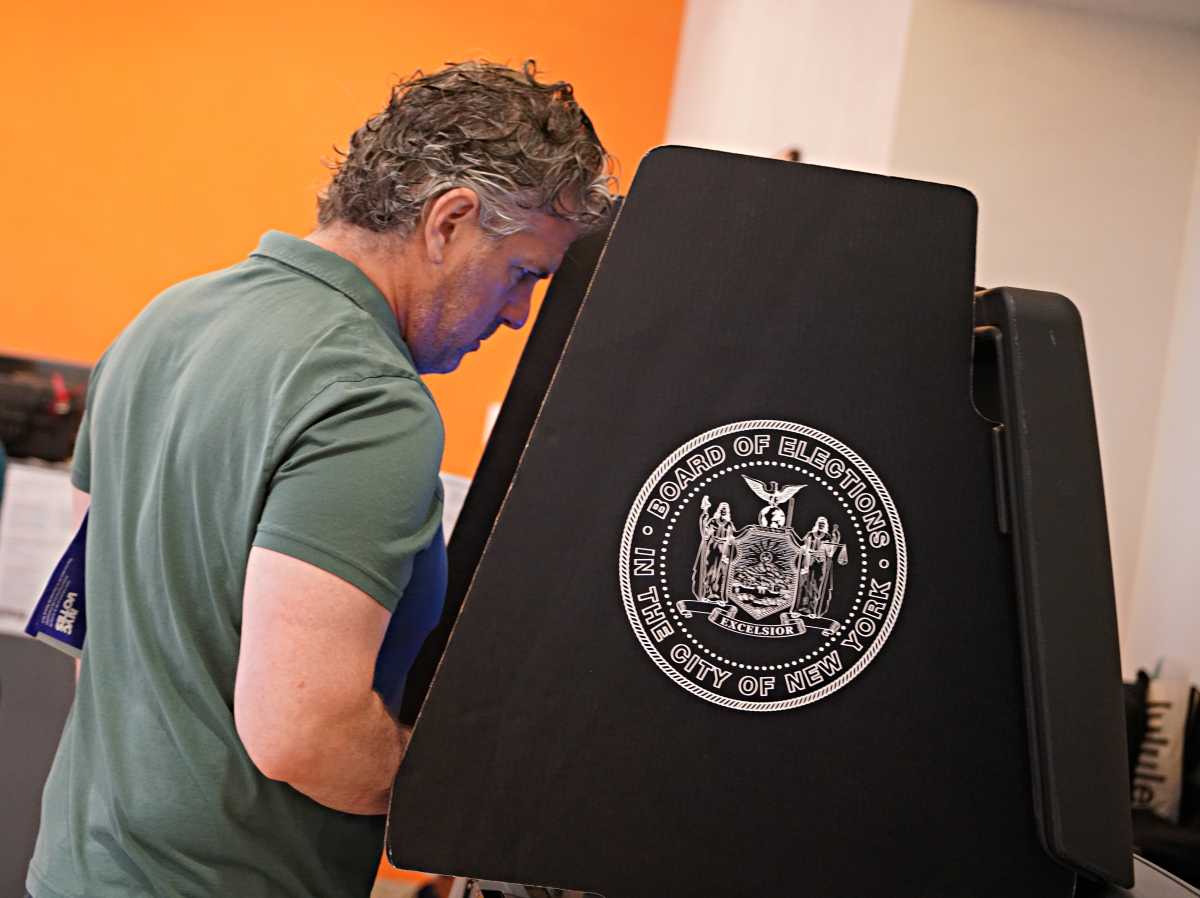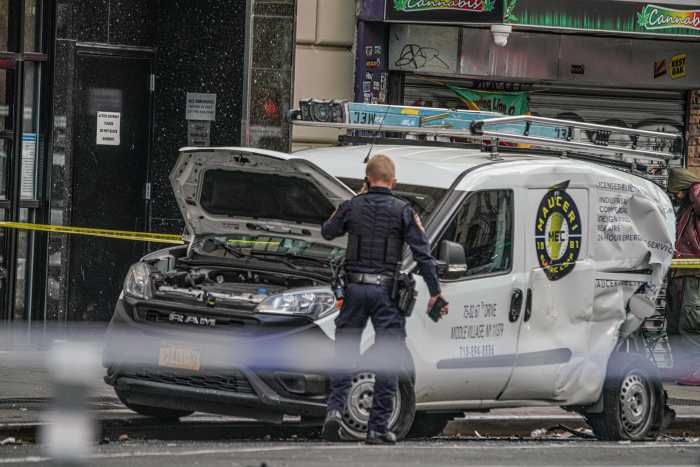Midwood straphangers with disabilities will soon be stuck as the Metropolitan Transportation Authority prepares to close the Flatbush Ave-Brooklyn College subway’s elevator until next year — leaving the station’s steep staircase as the only option to board the 2 and 5 trains.
Work to replace the elevator, situated at the southern point of the busy intersection of Flatbush and Nostrand avenues, will start on July 7, and is expected to continue until the first quarter of 2022.
The lift, which was installed in 1997 to comply with the federal government’s Americans with Disabilities Act, has reached the end of its “useful lifespan” — even outlasting a hydraulic elevator’s standard of 17.5 years, an MTA spokesperson told Brooklyn Paper.
It will be upgraded to include modernized equipment, including a new elevator cab, and new equipment in the cab, shaft, and pit. The MTA will also renovate the elevator’s machine room, spruce up its surveillance and fire alarm systems, and upgrade its “LiftNet remote monitoring equipment” which will allow the authority to be more responsive to elevator failures.
The project, which was included in the MTA’s 2015-19 capital plan, will cost approximately $7.65 million.
“Accessibility means building new elevators, replacing old ones so they stay reliable, and a host of other station, train and bus improvements across the system, all of which is underway at the same time,” said Quemuel Arroyo, the MTA’s chief accessibility officer, in a statement to Brooklyn Paper. “When this project is done, the Flatbush Ave station will have a state-of-the-art elevator that customers can rely upon for years to come. We thank our customers for their patience and invite them to use the fully accessible bus system while this critical work is underway.”
A 2000 report by the city’s then-Public Advocate Mark Green on elevators and escalators in subway stations, entitled “Stuck,” found that the station’s lift was already suffering from outages as soon as 1999, experiencing 29 outages that year, and 22 the following year.
The elevator was in service 93.16 percent of the time in April of 2021, when the most recent data is available, according to the MTA’s Elevator and Escalator Performance Dashboard. The MTA performance benchmark considers an elevator in good condition if it is operational at least 96.5 percent of the time, a spokesperson said.
Elevators can go out of service for either malfunctions or for regularly scheduled maintenance.
Joe Rappaport, one of the 2000 report’s authors and now the executive director of the Brooklyn Center for the Independence of the Disabled, said that, while elevator maintenance and repair is something of a fact of life for people with disabilities, the prolonged loss of the lift will be acutely felt by riders with disabilities who rely on the station.
“The loss of a station like this, far away from any other accessible station, really makes it difficult for anyone, in a wheelchair or if they have other mobility problems, from using the subway system,” Rappaport told Brooklyn Paper.
The MTA is advising riders who rely on the elevator to ride the bus to the Church Ave 2/5 station, which is three stops and over a mile away, in order to access the subway system.
Rappaport also noted that the half-year timeline for replacement will be burdensome on straphangers with other mobility issues.
“Why does it take so damn long to replace an elevator,” Rappaport said, “and why is there only one elevator at that station, so if there is a replacement, the entire neighborhood is inaccessible.”
The MTA’s current 2020-24 capital plan identifies 66 stations citywide where it plans to install elevators, including 21 stations in Brooklyn.
Only about a quarter of the subway’s 472 stations are currently ADA accessible, though most of the authority’s ambitious capital projects outlined in the $51.5 billion plan were put on hold due to the COVID-19 pandemic.
Update (June 3, 12:10 pm): This article has been updated to clarify the MTA’s elevator availability benchmarks.


